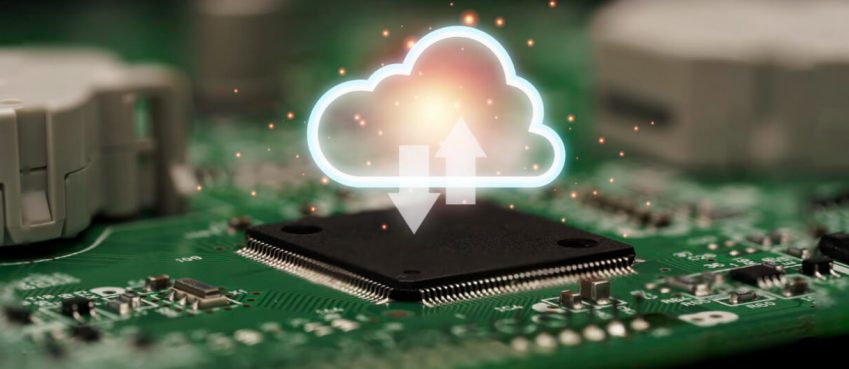
Do you ever dream of making money while sleeping? Email automation can make that dream come true. Sometimes referred to as “flows”, “workflows” or “drip campaigns”, email automation is a staple of every marketing strategy. Many people associate automation with auto-responders following a purchase or automated transactional emails.
Email automation is much more than just that. Email automation is a way to build a personal relationship or lead with customers, and a platform to tell a brand’s story. It also helps to increase the customer’s lifetime value.
We will be focusing on email automation’s power in this post. We’ll examine the stats, discuss the 5 pillars and 3 must-have automation for every business and explain how automation can help improve and facilitate customer journeys.
Stats
According to Klaviyo’s Benchmark Report for 2020, email automation opens, clicks, and conversion rates are all considerably higher than one-off email campaigns. Campaigns have an ideal open-and-click rate of 20% for opens and 2% clicks. Automated email flows have opens that are about twice as high at 40%, and clicks that are three times as high at 6%.
Why is this so? Email automation can be targeted more by the behavior of contacts. This is why statistics are so high. Email automation can be triggered by certain behaviors that users engage in on the website and forms. This automation is designed to catch buyers at the peak of their buying behaviors and deliver relevant content.
We have now seen the benefits of automation. It is important to understand the types of behavior that warrant automated email series.
What do you need to Automate in your Emails?
Automation can be used in your email marketing strategy for many purposes, including transactional emails like order confirmations and shipping notifications.
Automation can be used when someone subscribes to your mailing list when a product is added to their cart, when a customer spends a lot of time looking at a particular product, and when a customer hasn’t purchased in the past year.
This list could go on. Email automation can be used for a wide variety of purposes. No matter the situation, email automation can be used in a variety of situations. However, 5 things will make them work.
Also read: Caktus AI Review: Is It The Best AI Helper For Students? (Complete Guide)
Top 5 Pillars of Email Automation
While it is nice to just turn on automation and allow them to do their thing, it’s also important to ensure that they follow best practices. To be as efficient as possible, every automation requires five things. These five pillars are key to ensuring that every automation performs at its best.
Triggers
Triggers refer to the actions and behaviors customers perform on a website, or in the sales funnel. Triggers can be filled out with forms, visitors starting to checkout, or visitors making purchases. Triggers are powerful because each action a visitor takes triggers an email with specific messaging. Email subscribers will benefit from the high level of relevance that triggers provide.
Also read: Top 10 Best Software Companies in India
Timelines
They must be sent promptly, regardless of whether automation is set up to send an email within a year or immediately. If a visitor signs up for emails from a company, they expect to be welcomed immediately. If they do not receive the welcome email within a week, they will be disappointed.
A welcome email that cross-sells complimentary products won’t be received right after a purchase has been made. A brand’s timeliness and reliability is a key indicator of trust.
Personalization
Personalization is key to automating your life. Personalization could include a subscriber’s name or showing specific products in their cart. Or calling out their past purchases. People want to be viewed as people and not as email addresses.
Inboxes are more intimate than email addresses and should not be treated lightly. According to Campaign Monitor, personalized subject lines are 26% more likely to be opened.
Segmentation
Email marketers are familiar with the term segmentation. Segmentation is the process of separating contacts according to engagement, behavior, interests, purchase behavior, location, and so on. Segmentation is a way to create targeted lists of contacts that can be used for specific messages.
It makes sense to send an email to subscribers who are interested in particular product categories. A brand can segment signups for a free webinar to send them content.
A/B Testing
Without testing, it’s impossible to improve and gain key insights. Conducting A/B testing is an important part of email automation. This means that you can make changes to subject lines, email content, calls-to-action, and call-to-action in order to find out what resonates with your audience.
Testing isn’t a quick thing. It takes time to reach statistically significant conclusions. It is easy to think that a test is failing after just a few days. Don’t do it. Every failure provides valuable insight into what works for an audience and what doesn’t. Automations allow you to do A/B testing with a steady stream of data. Data begins to tell a story, and it is possible to gain actionable insights.
Also read: Top 10 Best Artificial Intelligence Software
Three Email Automations Every Business Should Have
Welcome Series
An automated flow called a welcome series triggers when a contact signs up to receive email marketing from the business. A welcome series is a great way to introduce a subscriber and tell them about the brand. It also focuses on the unique selling propositions (USPs) of the brand. The welcome emails are prompt and sent when the brand is most in the know.
This is why welcome emails are one of the most successful automation a business can have. Depending on the industry, open rates can range from 40-50% to clicks between 6-9% and 69% depending on their industry.
Good practices in welcome emails include prompt delivery, personalization based upon the subscriber’s name and interests, and a small incentive, such as a discount. Every business should start a welcome series.
A company can use the abandoned cart flow to extract the best from their lower-funnel visitors. These customers have added an item to their cart but never purchased it. Because a contact has given their email address, they will be sent targeted emails with specific information about the products that they have left in their cart.
This is the power of abandoned cart automation. We know that they are at the bottom end of the sales funnel, and have the intent to purchase. It is important to remind them that they have items in the cart. This will help you capitalize on their buying intent. Sometimes, abandoned cart automation has conversion rates that are 3-4 times higher than the welcome series.
Post-Purchase
Recommendations, thank-you messages, and repeat customers. What does this have in common with the other two? These are essential components of any successful post-purchase flow.
These emails can be a great way of building brand loyalty and encouraging repeat purchases. A personal note sent by a company to customers after a purchase can go a long way. Let’s say a customer has just purchased a new razor.
What’s the best thing about that razor? You can get replacement razors, new handles, shaving cream, and so on. Emails after purchase are a great way to give complimentary products based upon the customer’s past purchases and behavior. Every post-purchase flow has one goal: to increase customer lifetime value, build loyal customers and strengthen relationships.
Also read: What Is The Best Time ⌛ and Day 📅 To Post On Instagram? It Is Definitely NOT ❌ Sunday (A Complete Guide)
Customer Journey
Automations are all about customer experience. Automations give businesses the ability to manage the customer experience from the initial contact through to the end of the sales process. Email automation is crucial to increasing customer lifetime value. Email automation is timely and personal in a way other marketing channels can’t.
Each customer journey involves many touchpoints. It is important to identify when email automation can improve a touchpoint with a customer or lead. A lighter touchpoint, such as an introduction to a company, is needed for top-of-the-funnel leads who are not ready to buy.
A welcome email is a great way to accomplish this. Email automation allows contacts to move through the funnel and tell a deeper brand story. It also helps to focus on the brand’s unique value.
Email Service Providers (ESPs).
Email Service Providers (ESPs) are paid platforms that enable email automation and campaigns. Gmail, Apple Mail, and Microsoft Outlook don’t have what it takes to enable the email automation that we are referring to. This automation requires more technical skill and firepower. There are many ESPs available on the market. We will only focus on three of the most popular.
Klaviyo
Klaviyo is the top dog for all things relating to email/e-commerce. It integrates very well with WooCommerce, Shopify, and BigCommerce to allow it to pull in very specific data. Klaviyo is able to import any data from e-commerce websites, including items added to carts and purchases made. Its email automation capabilities are unparalleled and its drag-and-drop email creator makes it extremely user-friendly.
Active Campaign
Active Campaign is another powerful ESP that makes data integration for email automation very accessible and customizable. Active Campaigns can be used to create customized websites. It allows for almost any type of automation and trigger that a company may need. Active Campaign also features a powerful lead scoring system, which can automate lead generation and sales for B2B companies.
Hubspot
Probably the most well-known, one-stop-shop for all things digital marketing, Hubspot has very powerful email automation capabilities. Hubspot acts as a CRM and consolidates all data and user behavior. It integrates sales and marketing seamlessly, making it easy for users to pinpoint areas where email automation could be useful.
Also read: What Is Conduit Minecraft? How To Craft and Activate Conduit In Minecraft?
Conclusion
Email automation is an integral part of any email marketing strategy and all marketing strategies. We have discussed the benefits of automation and how to implement them. In this post, we also discuss the 5 pillars of email marketing. Finally, we identify the 3 essential email automation every business should have.
Top 10 News
-
01
Top 10 Deep Learning Multimodal Models & Their Uses
Tuesday August 12, 2025
-
02
10 Google AI Mode Facts That Every SEOs Should Know (And Wha...
Friday July 4, 2025
-
03
Top 10 visionOS 26 Features & Announcement (With Video)
Thursday June 12, 2025
-
04
Top 10 Veo 3 AI Video Generators in 2025 (Compared & Te...
Tuesday June 10, 2025
-
05
Top 10 AI GPUs That Can Increase Work Productivity By 30% (W...
Wednesday May 28, 2025
-
06
[10 BEST] AI Influencer Generator Apps Trending Right Now
Monday March 17, 2025
-
07
The 10 Best Companies Providing Electric Fencing For Busines...
Tuesday March 11, 2025
-
08
Top 10 Social Security Fairness Act Benefits In 2025
Wednesday March 5, 2025
-
09
Top 10 AI Infrastructure Companies In The World
Tuesday February 11, 2025
-
10
What Are Top 10 Blood Thinners To Minimize Heart Disease?
Wednesday January 22, 2025







